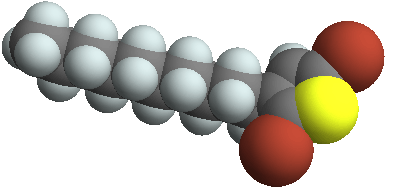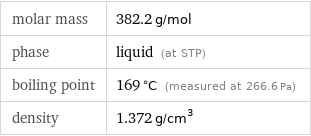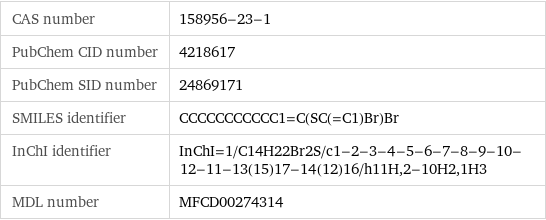Input interpretation

2, 5-dibromo-3-decylthiophene
Chemical names and formulas

formula | C_14H_22Br_2S name | 2, 5-dibromo-3-decylthiophene alternate names | 2, 5-dibromo-3-decyl-thiophene mass fractions | Br (bromine) 41.8% | C (carbon) 44% | H (hydrogen) 5.8% | S (sulfur) 8.39%
Lewis structure

Draw the Lewis structure of 2, 5-dibromo-3-decylthiophene. Start by drawing the overall structure of the molecule, ignoring potential double and triple bonds: Count the total valence electrons of the bromine (n_Br, val = 7), carbon (n_C, val = 4), hydrogen (n_H, val = 1), and sulfur (n_S, val = 6) atoms: 2 n_Br, val + 14 n_C, val + 22 n_H, val + n_S, val = 98 Calculate the number of electrons needed to completely fill the valence shells for bromine (n_Br, full = 8), carbon (n_C, full = 8), hydrogen (n_H, full = 2), and sulfur (n_S, full = 8): 2 n_Br, full + 14 n_C, full + 22 n_H, full + n_S, full = 180 Subtracting these two numbers shows that 180 - 98 = 82 bonding electrons are needed. Each bond has two electrons, so in addition to the 39 bonds already present in the diagram add 2 bonds. To minimize formal charge carbon wants 4 bonds. Identify the atoms that want additional bonds and the number of electrons remaining on each atom: Fill in the 2 bonds by pairing electrons between adjacent highlighted atoms: Answer: | |
3D structure

3D structure
Basic properties

molar mass | 382.2 g/mol phase | liquid (at STP) boiling point | 169 °C (measured at 266.6 Pa) density | 1.372 g/cm^3
Units

Liquid properties (at STP)

density | 1.372 g/cm^3 refractive index | 1.538
Units

Chemical identifiers

CAS number | 158956-23-1 PubChem CID number | 4218617 PubChem SID number | 24869171 SMILES identifier | CCCCCCCCCCC1=C(SC(=C1)Br)Br InChI identifier | InChI=1/C14H22Br2S/c1-2-3-4-5-6-7-8-9-10-12-11-13(15)17-14(12)16/h11H, 2-10H2, 1H3 MDL number | MFCD00274314
Safety properties

flash point | 110 °C